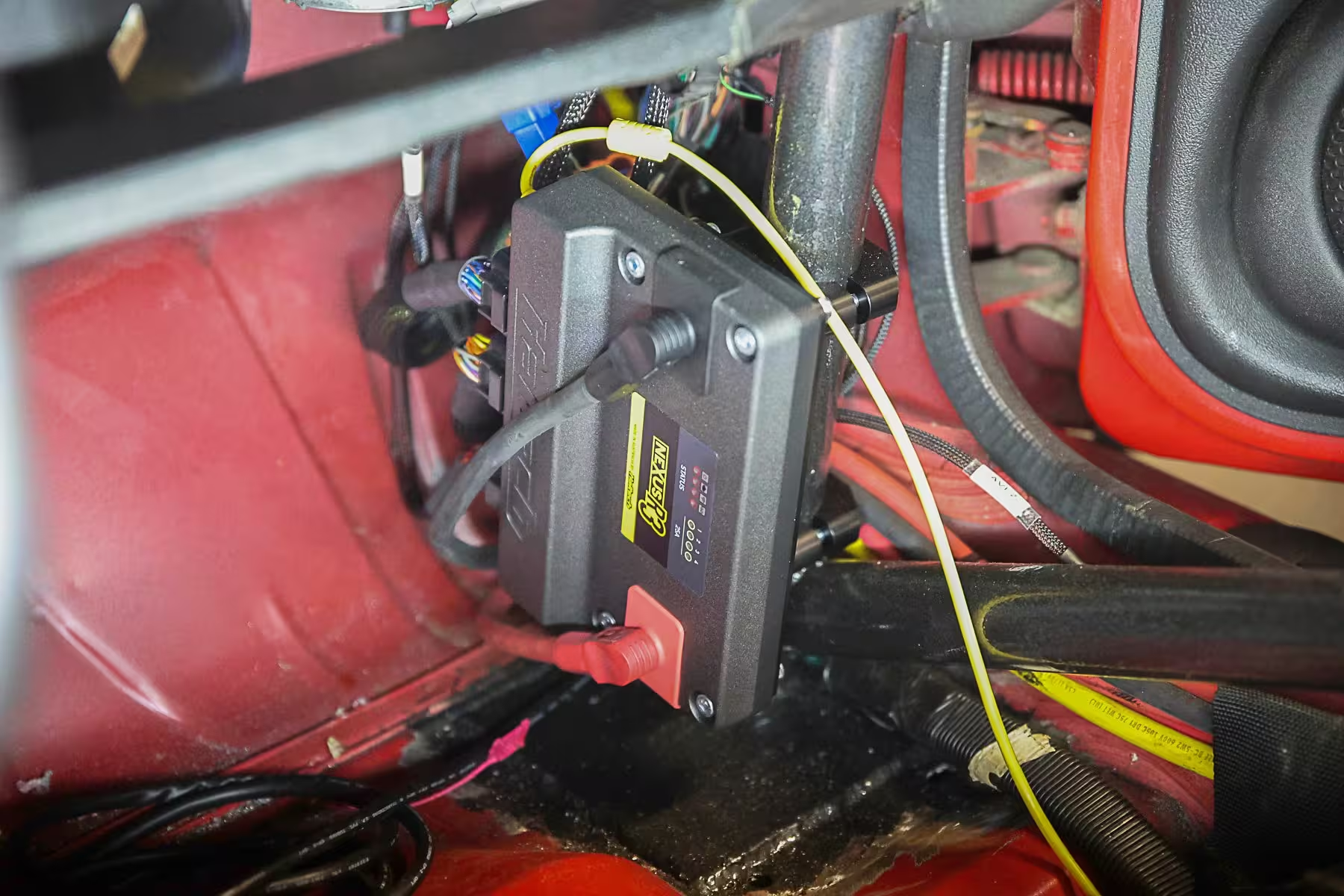When we decided to move Project Red Dragon from the OEM ECU, to an aftermarket unit, a wiring harness change was required. Since Haltech’s Nexus R3 didn’t have an LS harness available when we made the switch, a custom harness needed to be created. We worked with Haltech’s Andrew DiMartino to fabricate a harness and learn how to use a flying lead harness for any application.
So, what exactly is a flying lead harness? This type of wiring harness is partially terminated on the ECU side. What that means is the connections for your specific ECU are there and ready to be plugged in. The ends of the wires aren’t terminated, so you have to add your own connectors for your application. These harnesses will vary based on the ECU. Our Haltech flying lead harness did have the wires labeled and grouped together for most of the sensors and other items.
Here is what our flying lead harness looked like after it got loomed up.
Before you pick up a pair of wire cutters, the first thing you’ll want to do is come up with a plan for your harness. You’ll want to think about possible wire routing locations, where you need to mount the ECU, and what materials you’re going to need to finish the job. Planning in advance will help mitigate the risk of wiring yourself into a corner later.
“Using a flying lead harness might seem intimidating, but with the right plan, it isn’t that bad. Planning is the most important part of the job so don’t rush things, taking your time will save you a lot of headaches later. You want to treat the planning phase like a game of chess, think of a strategy that will help you reach your goal. I look at how the vehicle is going to be used, and how I can build a harness that will match the application when I’m in the planning stage,” DiMartino says.
Besides planning where the harness will go, you need to think of a safe spot for your ECU. This location should be out of the way, but can still be accessed easily if you need to make any wiring changes or repairs. Electronics don’t like heat or moisture, so a spot that keeps the ECU from being exposed to the elements is going to work the best.
Now it’s time almost time to execute your wiring plan, but first, you’ll need to make sure you have the right tools and materials. You really only need some basic tools to make a complete wiring harness…
Click Here to Read the Full Original Article at DragzineDragzine…

